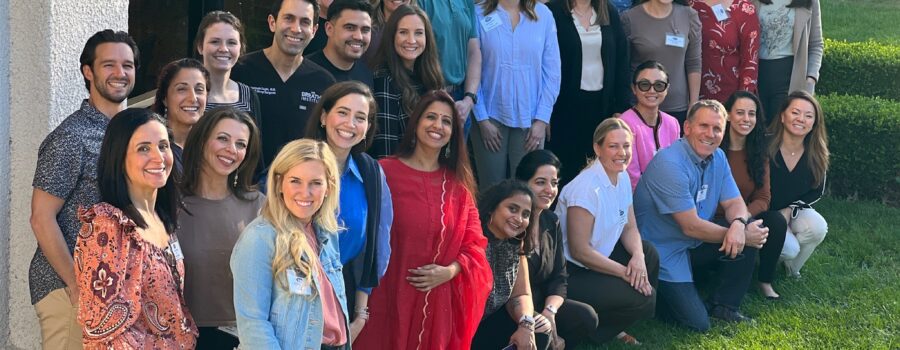The pursuit of health is one that can be exhausting for both dentists and their patients. Most dentists want their patients to be healthy, but often they lack the time and resources to truly understand the etiology of disease in the specific individual they’re treating. Even if the etiology is identified, it’s usually multifactorial, they lack the education and resources to teach their patients about nutrition, habit correction, and airway health. The Breathe Institute is a pioneer in airway education and research; as a result they have been an amazing resource for me and hundreds of dentists alike.
It’s not inexpensive to attend educational seminars and learn from leaders in their field. But the alternative of staying stagnant in one’s dental education is much more expensive for both the dentist and their patient base. Every year, dentists are required to take a certain number of educational hours to keep their dental license active. For the most part, we dentists get to choose the education based on our interest in the topic. My experience at The Breathe Institute has made such an indirect positive impact on my patient’s health that I feel a sense of obligation to share this with other colleagues.
MiBöca Dentistry’s Visit
In October of 2023, I attended the Breathe Institute seminar in Calabasas, California with my MiBöca Dentistry airway team. I had a strong idea that this program would further elevate the care that I could provide to the patients of MiBöca Dentistry back home in Omaha, Nebraska. I just didn’t realize how monumental the shift in focus would be until we started implementing what we had learned.
Four days of intensive study and collaboration with practitioners from across the world was just what we needed. There were dentists from the United Kingdom, India, Utah, Nebraska, California, Texas, Michigan, and many other states. We learned about the importance of the structures adjacent to the airway in the development of the face, jaws, and teeth. The impact that airway issues can have on sleep and overall health is fascinating to say the least.
Day 1
Day one we learned about ankyloglossia, also known as tongue ties, updates on research, mouth breathing, nasal obstruction, turbinate/adenotonsillar hypertrophy, myology assessment protocols, and we ended the day with a take-home sleep study by WatchPAT ONE.
The goal for the day was to develop an understanding of the differential diagnosis for the root-cause of sleep-related breathing disorders. We addressed the dysfunction in both pediatric and adult populations, and learned to screen and identify the clinical signs of mouth breathing, tongue-tie, limited tongue-space, and myofunctional disorders. It was incredibly interesting to learn these things, and all I could think about were all the patients that I could now properly identify as having these risk factors.
Day 2
Day two was spent learning about the growing research in support of myofunctional therapy, a history lesson, and the surgical approach to a frenuloplasty or tongue-tie release. After learning about the surgical correction of symptomatic frenulum restrictions, we further discussed the importance of pre and post surgery orofacial myofunctional therapy for enhanced wound healing. We finished up the day learning about the importance of optimizing growth and development for infants and children.
Day 3
Day three was a deep dive into sleep and breathing. We learned about the fundamentals of interpreting sleep studies, we assessed our own sleep studies that we had taken, use of CO2 laser technology, surgical case study, and a novel protocol for surgically assisted expansion of the maxilla by Dr. Kevin Coppelson. The impact of sleep disruption due to mouth breathing, snoring and apneas on the pediatric and adult populations is overwhelmingly systemic.
This was the day that I realized the importance of sleep and proper breathing for overall health and not just oral health. I started to develop protocols and build an integrative team of professionals back home to help patients overcome these barriers to health.
Day 4
The final and fourth day we continued to learn about the multidisciplinary care that is needed for patients, learned more about the importance of case studies and clinical studies, and we even watched a live frenuloplasty (tongue-tie release) performed by Dr. Soroush Zaghi himself. We were able to continue practicing our hands-on myofunctional assessments and took time to develop MiBöca’s airway protocol. MiBöca Dentistry is dedicated to helping patients with their airway concerns.
Of importance is the quality and emphasis on evidence-based care. Dr. Zaghi, a fascinating and naturally curious individual, is not only a practicing ENT doctor but also a researcher and educator. The stories and experiences he shared were genuine and intriguing. The saying goes, practice what you preach. Dr. Zaghi embodies that very statement. He shared his very personal surgical journey to correct his own airway, myofunctional, and dento-skeletal issues. He was able to communicate how he felt before, during and after the surgery. Be sure to give him a follow on instagram to learn more about his journey.
If you’d like to learn more about airway studies, be sure to read the blog post titled, “Airway, Myofunctional Therapy, and Sleep Disorders; A Compilation of Studies, Opinion Articles, and Case Studies.”
Breathe Institute: Resource For Interested Dentists
I could feel the sincerity, wisdom and positive energy from the entire crew at the Breathe Institute. I highly encourage all dentists and their team members to learn from the Breathe Institute and help spread the word about myofunctional disorders, sleep disordered breathing, and integrative care. If you’d like to attend a live seminar or get your feet wet with a webinar or online training you can visit their website at www.breathecourses.com .




